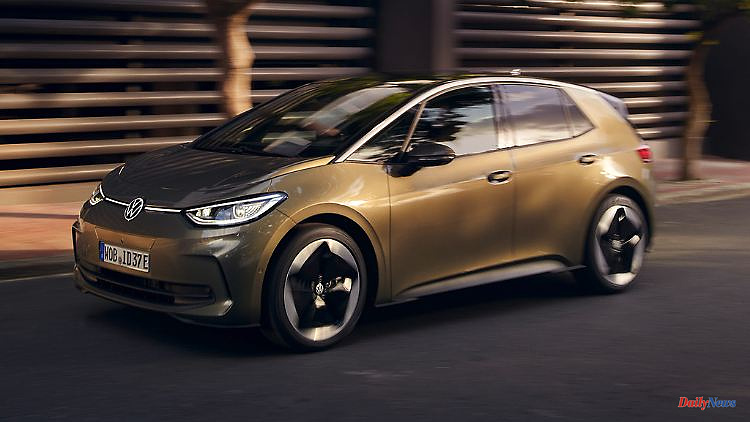The ID.3 has so far not been able to fulfill VW's great hopes for an electric bestseller. A facelift should now boost demand - but at a fairly high price.
With an extensive facelift, VW now wants to put the hopeful ID.3 on the road to success after all, because so far the compact electric vehicle has clearly fallen short of expectations. On the outside, it is mainly the details that have changed, with the interior in particular, which was much criticized at the time of the market launch around three years ago, presenting itself as being heavily polished.
Inside the compact electric sedan, hard, unattractive plastic has so far prevailed. Among other things, the door panels are now upholstered, design seams also ensure a nicer look on the seats, the center console now houses an inductive charger for the smartphone as standard and the touchscreen is one size bigger. In addition, it now runs a revised version of the infotainment software.
The operating concept of the multifunction steering wheel has not changed: the imprecise capacitive touch surfaces are still used there instead of physical buttons. Little changes on the outside, among other things, the black decorative panel disappears below the windshield.
As usual, buyers have the choice between a large and a medium-sized battery, and a small variant is to come shortly. The electric motor has an unchanged output of 150 kW/204 hp, and the range is up to 546 kilometers.
The prices rise significantly with the facelift: In connection with the middle battery, at least 44,000 euros are due - that's almost 5,000 euros more than before. The new basic variant with a small battery expected for spring should cost just under 40,000 euros.
Even if the sales figures for the ID.3 do not quite meet VW's hopes, it is still one of the top places when it comes to new registrations for e-cars in Europe. The Tesla Model Y was the most popular electric car in Europe in January 2023. Across the EU, 7174 units of the mid-size crossover were newly registered, according to data from consulting firm Jato.
It is followed by Dacia Spring (4242 units), VW ID.4 (3812) and VW ID.3 (3348). A total of 92,743 new e-cars rolled onto the roads of Europe in January, 14 percent more than in the same month last year.












